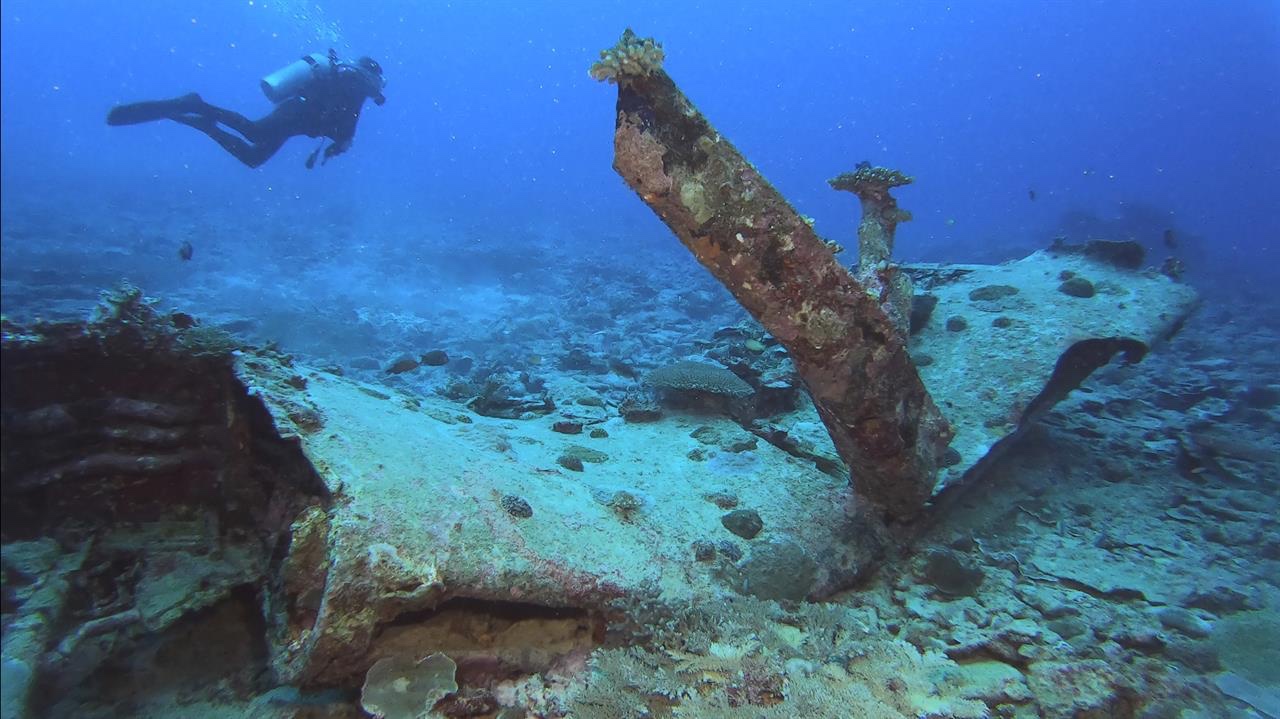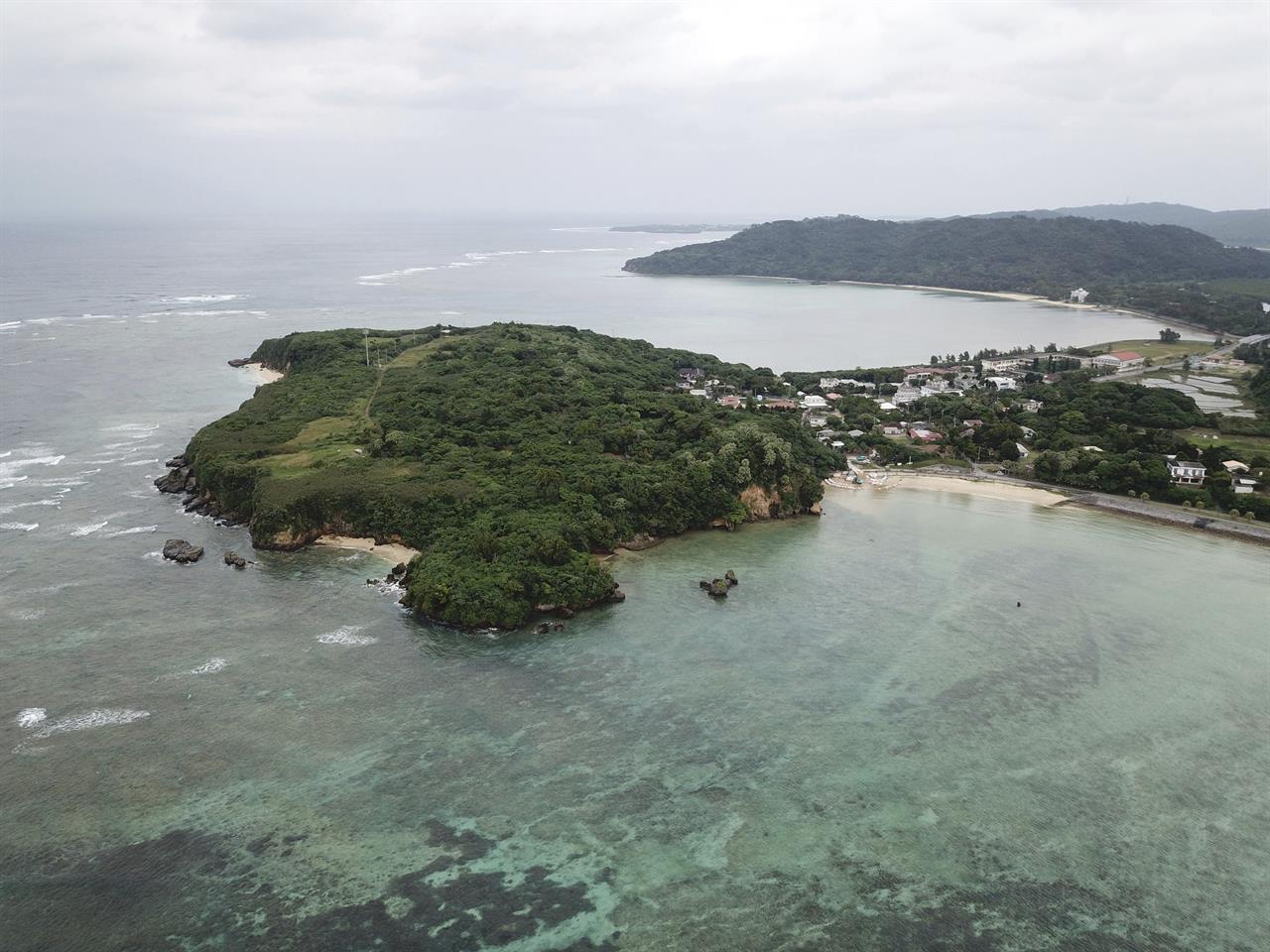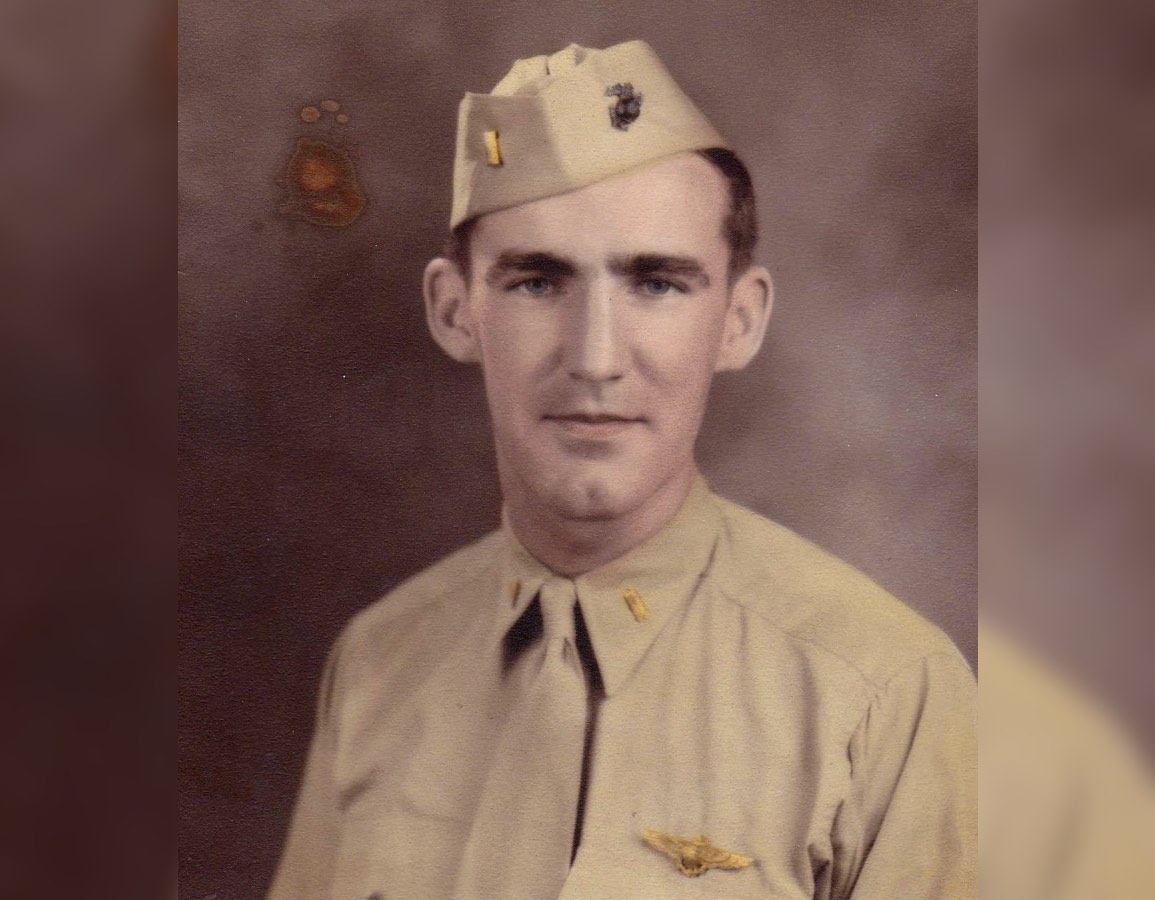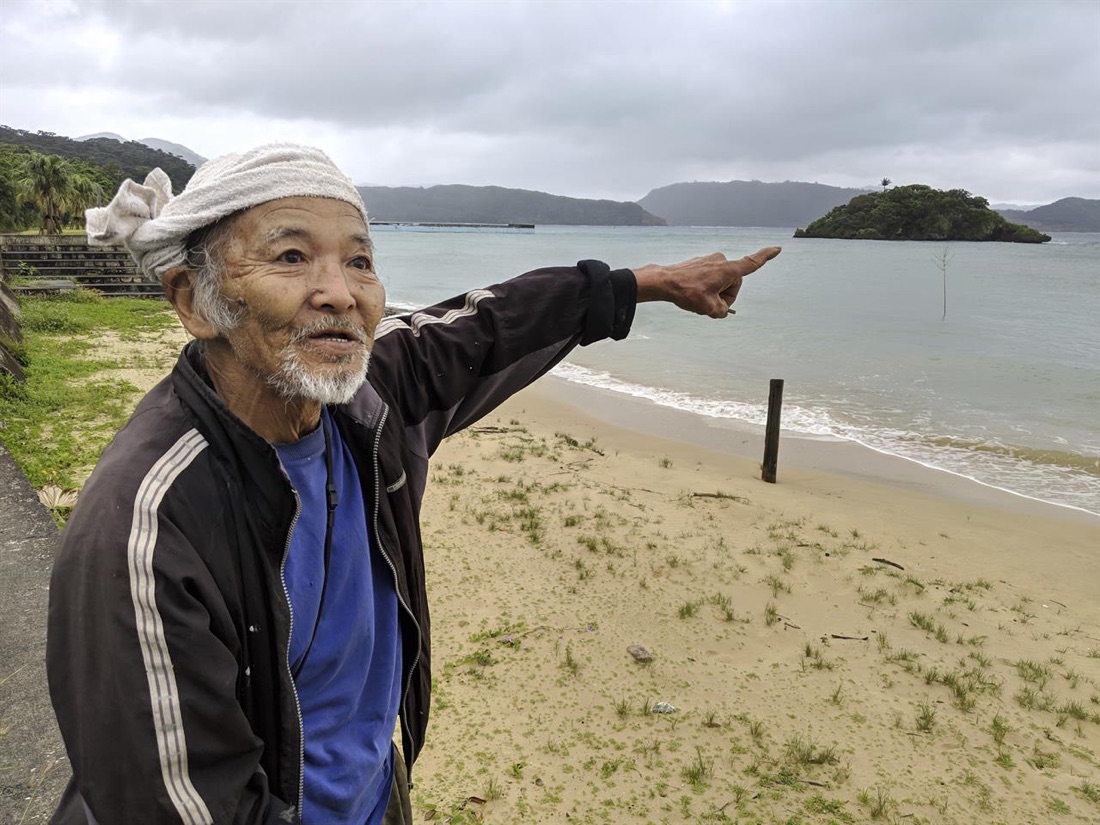Wartime Story Leads Divers to Underwater WWII Wreck of Missing US Pilot

The identity of a U.S. warplane pilot, missing in action for almost 75 years, has been revealed after a diving expedition to the wreck of his aircraft, on a coral reef alongside a remote Japanese island called Iriomote Jima.
The researchers, Justin Taylan and Michael McAlonie visited the wreck site and determined the aircraft is an F4U-4 Corsair fighter-bomber piloted by U.S. Marine 2nd Lt. John McGrath, who has been listed as missing since he took part in an attack in July 1945 during World War II.
A wartime battle report recorded that McGrath's warplane had failed to recover from a dive during a rocket attack on Japanese positions at Iriomote Jima. [Mayday! 17 Mysterious Shipwrecks You Can See on Google Earth]
Until now, McGrath's remains have not been identified, which makes him one of nearly 73,000 Americans "missing in action," (MIA) from WWII.
Taylan, a researcher and diver who runs the Pacific Wrecks website and nonprofit organization that searches for WWII aircraft crash sites, told Live Science that he and McAlonie spent almost two years tracking down the wrecked aircraft.
It now lies under about 80 feet (25 meters) of seawater, a few hundred yards from the village of Sonai on Iriomote Jima and a short distance from a much deeper drop-off.
Taylan dived to the wreck, where he took photos and video, in March this year, accompanied by Japanese divers, while McAlonie — who is not a diver — stayed in the boat above.
Get the world’s most fascinating discoveries delivered straight to your inbox.
Wartime memory
McAlonie has a personal connection to the missing pilot, who was a high-school friend of his father's in Troy, New York.
Just before McGrath was reported MIA, in July 1945, he had flown his aircraft from the Japanese island of Okinawa, where he was stationed, to Iwo Jima, then occupied by American forces. At that time, McAlonie's father, Howard, was a Navy sailor working on the island with a Seabee construction battalion.
But he and another classmate from Troy were surprised in their tent when McGrath paid them a flying visit. All three men were about 20 years old at the time, and they had been fighting for U.S. forces in the Pacific. [Supersonic! The 11 Fastest Military Airplanes]
McAlonie said his father learned a few days later that McGrath had gone MIA, and the memory of the wartime visit to Iwo Jima by his classmate had stayed with him for the rest of his life.
"He talked about it very frequently when I was a kid, and I was always interested in it," McAlonie told Live Science.
Howard McAlonie died a few years ago, but he was able to meet some surviving members of McGrath's family, and to learn what they knew at that time about McGrath's death.
Mystery wreck
In 2017, Michael McAlonie teamed up with Taylan to try to find out more about the missing wartime pilot.
"The McGrath case was a cold case — it had no hope of really being resolved, it was stagnant, the family really knew nothing other than a telegraph that was sent home to them in 1945," Taylan said. But "if the combat reports were correct, this plane wreck was in diveable depth and could be found."
Their research led them to Iriomote Jima, where they discovered that the story of the crashed American warplane was known to some elders on the island.
They also learned that the site of the submerged air wreck had been found, and that human remains were recovered from it in the 1980s. But for reasons they haven't been able to find out, the wreck and the remains were not attributed to McGrath.
Taylan said that there was no question that the wreck was that of McGrath's warplane, which was known to be the only American aircraft that had crashed in that spot.
The wrecked aircraft is in several pieces, with both wings, the engine and other parts lying a short distance from each other on the seafloor, but his dive had established it was an F4U–4 Corsair fighter-bomber, like that flown by McGrath on his final mission, he said.
For McAlonie, the rediscovery of the wrecked wartime aircraft has given closure to a family story that spanned generations.
"What we really did was bring two incomplete halves of a story together for the first time – so now the Japanese know who this pilot is who they have prayed for, and now John's [McGrath's] family and the city of Troy, New York, knows where their son is," he said.
- The 20 Most Mysterious Shipwrecks Ever
- 10 Epic Battles that Changed History
- 30 of the World's Most Valuable Treasures That Are Still Missing
Follow Tom Metcalfe on Twitter @globalbabel. Follow Live Science @livescience, Facebook & Google+. Original article on Live Science.
Tom Metcalfe is a freelance journalist and regular Live Science contributor who is based in London in the United Kingdom. Tom writes mainly about science, space, archaeology, the Earth and the oceans. He has also written for the BBC, NBC News, National Geographic, Scientific American, Air & Space, and many others.





